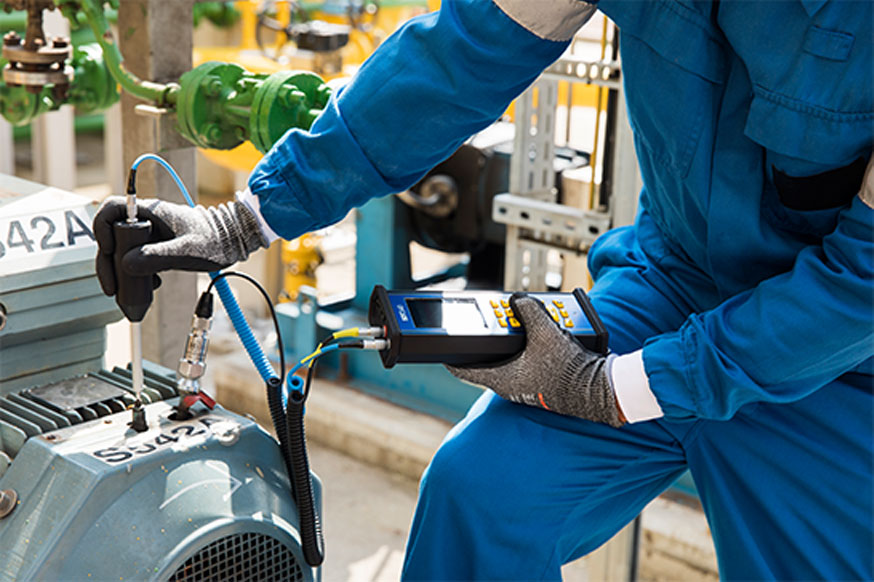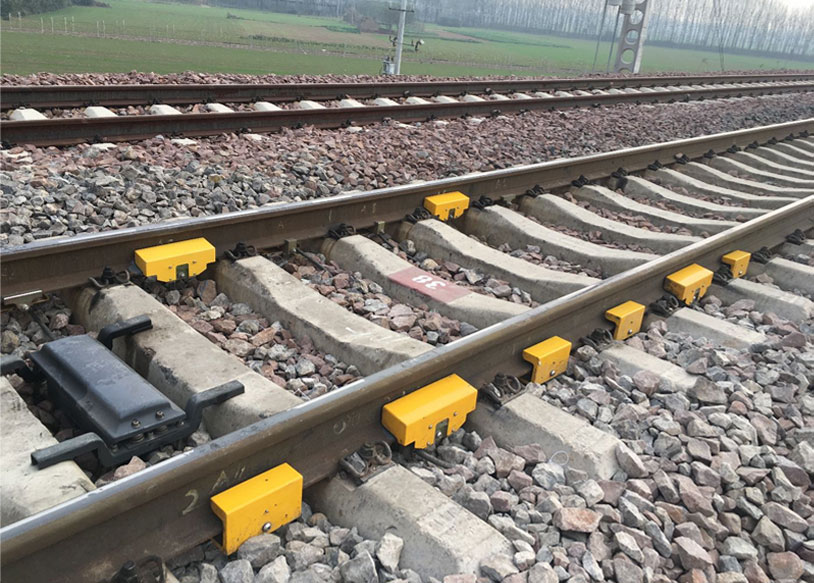Acoustic Bearing Monitoring
Bearing Health Monitoring during train operations provides a valuable source of information for optimizing maintenance and overhaul intervals. The Acoustic Bearing Monitoring is a highly sensitive measurement system that collects the acoustic signature of each bearing of a passing train. Acoustic Bearing Monitoring detect a defective bearing, before damaging heat build-up has occurred thereby giving repair crews sufficient early warning so as to allow the train to safely run to a place where repairs can be performed conveniently and inexpensively and/or to repair the bearing in its early stages of failure.
Microphones record the sound emitted from passing trains. The microphones are placed beside and/or between the rails to measure both out-board and in-board bearings. Due to a doubled setup a high reliability by measuring multiple bearing rotations is given, even under bad weather conditions.

In addition, the sensors are able to identify the source of a sound by the use of advanced algorithms to distinguish between train and environmental noise. Each bearing type is identified by the use of an Automatic Vehicle Identification system. Detected defects are assigned to bearing components like cups, cones or rollers. For each train passage defects are tracked and ranked according to customer defined tolerance levels. This also provides trending data for each individual bearing by our software. The algorithms cover a wide range of axle bearing types and can be easily adapted to new types.
Defects associated with the individual components of both tapered and cylindrical roller bearings are detected at an early stage and trends for each monitored bearing are provided. Alarms are generated at user-defined tolerance levels, which supports efficient wheelset maintenance Programs.
It is still another objective to determine the location of the defective bearing in the train (car number, axle number and axle side).
It is a further objective to analyze, before repairs begin, the type of bearing defect (i.e., whether the defect is in the bearing cup, cone, or roller) which has occurred.
It is a further objective to detect these defects reliably in a noisy environment such as is common in railroad and other industrial applications.
In analyzing the sounds generated by passing railroad trains, it has been noted that the impact frequencies characteristic of various bearing defects are generated in amplitude-modulated form on an acoustic carrier frequency band which is independent of the speed of the passing train. Thus, while the bearing signature may be a function of train speed, the carrier frequency bands are not.
Therefore, apparatus which includes a microphone is placed beside railroad tracks so as to monitor the sounds emanating from the bearings of a passing railroad train. Preferably, microphones are placed adjacent opposite rails. A series of electronic amplifiers and preliminary filters is used to increase the output of the microphone to a usable voltage level and to filter extraneous frequencies from the resulting electronic signal. This allows the apparatus to operate effectively notwithstanding excessive ambient noise.
The gain of the amplifier is adjusted by the train speed and direction sensor so that the output of the amplifier is relatively constant in spite of significant volume changes due to train speed and direction (in that, under some circumstances, train direction is related to train loads, which is, in turn, related to the volume of noise generated thereby).
After electronic amplification and preliminary filtering, the signal consists predominantly of the preselected carrier frequency band which, in the presence of the characteristic impact frequencies of bearing defects, will be generated within an envelope of the characteristic impact frequencies. In other words, there is an amplitude-modulated signal with a preselected carrier frequency band within an envelope defined by any characteristic impact frequencies which may be present.
Standard amplitude demodulation techniques are used to extract the envelope in which the carrier frequency band is being transmitted. The extracted frequency signal is processed by an array of low-frequency bandpass filters which pass only the frequency ranges in which the various characteristic impact frequencies occur. The center frequencies and the bandwidth of these filters are automatically increased with increasing train speed by the use of switch capacitors, responsive to a train speed and direction sensor.
The array of train speed tuned filters thus performs a spectral analysis of the resulting signal.
The predominant frequency values of the spectrum analyzer are set automatically within its filter frequency range to the expected characteristic impact frequency values of a defective bearing.
When a characteristic impact frequency value falls within the filter range of the filter circuitry of the spectrum analyzer, the operators of the apparatus notify the operators of the train in order that appropriate plans for repair may be made.


